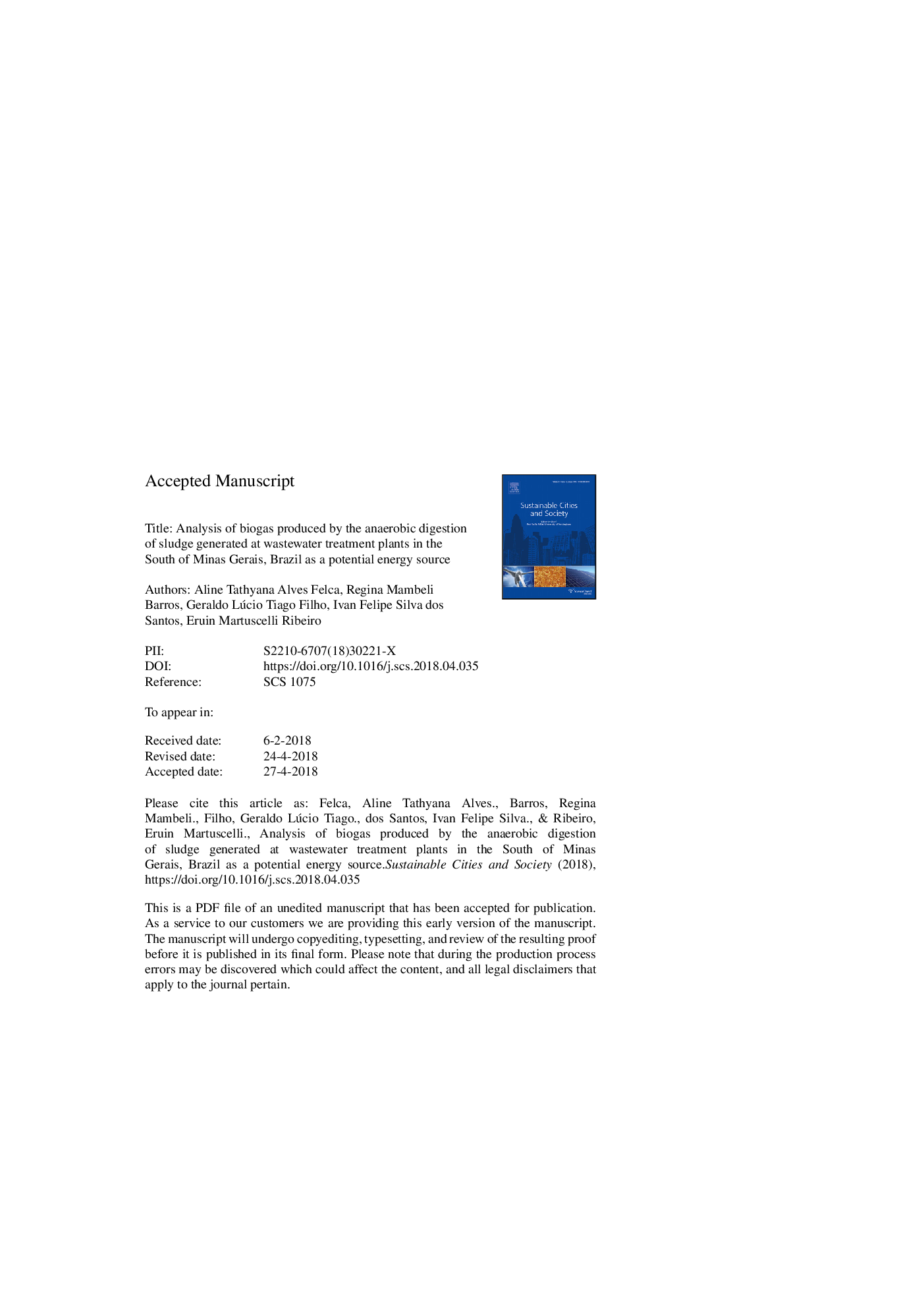| کد مقاله | کد نشریه | سال انتشار | مقاله انگلیسی | نسخه تمام متن |
|---|---|---|---|---|
| 6774901 | 1432007 | 2018 | 68 صفحه PDF | دانلود رایگان |
عنوان انگلیسی مقاله ISI
Analysis of biogas produced by the anaerobic digestion of sludge generated at wastewater treatment plants in the South of Minas Gerais, Brazil as a potential energy source
دانلود مقاله + سفارش ترجمه
دانلود مقاله ISI انگلیسی
رایگان برای ایرانیان
کلمات کلیدی
موضوعات مرتبط
مهندسی و علوم پایه
مهندسی انرژی
انرژی های تجدید پذیر، توسعه پایدار و محیط زیست
پیش نمایش صفحه اول مقاله

چکیده انگلیسی
This study aimed to evaluate the biogas energy potential of the anaerobic digestion of sludge generated in wastewater treatment plants (WWTPs) in the south of Minas Gerais, Brazil. The estimate included the economic feasibility analysis of thermoelectric power plants (TPP) using biogas in the context of the Brazilian energy sector. The research began with the analysis of physicochemical characteristics. Examinations performed were total solids, fixed solids, volatile solids, biochemical oxygen demand, chemical oxygen demand, pH and total Kjeldahl nitrogen, of the sludge from the WWTPs of each of the cities studied. The sludge samples were biodigested, and the biogas production capacity was evaluated. The sludge samples were obtained from a region with a total population of 420,825 inhabitants, as estimated in 2017. The area is composed of the municipalities of Varginha, Pouso Alegre, Santa Rita do Sapucaà and Itajubá. Estimate of biogas generation and the corresponding values of usable power and electrical energy generated for each of the municipalities in this region were carried out. The results showed that the most significant CH4 production values were: Varginha (52.71%), Pouso Alegre (42.12%), Santa Rita do Sapucai (18.84%), Itajubá - with heating (49.98%) and Itajubá - without heating (48.41%). Pouso Alegre presented the largest reduction in BOD (59.62%), Varginha the highest decrease in TVS (38.03%) and Santa Rita do SapucaÃ, in TKN (38.91%). However, the last city had the highest amount of H2S in the biogas, 11.0 (ppm). This region could theoretically generate a total of 23.6â¯GWh/year of energy, and the municipality of Pouso Alegre presented the highest theoretical usable power potential (329.40â¯kW), while Varginha showed the lowest value (71.39â¯kW). However, economic viability calculations indicated the economic impracticality of constructing TPPs in the four treatment stations analyzed, demonstrating the need to implement public policies to support the generation of energy from renewable sources such as residual biomass from sanitation services.
ناشر
Database: Elsevier - ScienceDirect (ساینس دایرکت)
Journal: Sustainable Cities and Society - Volume 41, August 2018, Pages 139-153
Journal: Sustainable Cities and Society - Volume 41, August 2018, Pages 139-153
نویسندگان
Aline Tathyana Alves Felca, Regina Mambeli Barros, Geraldo Lúcio Tiago Filho, Ivan Felipe Silva dos Santos, Eruin Martuscelli Ribeiro,